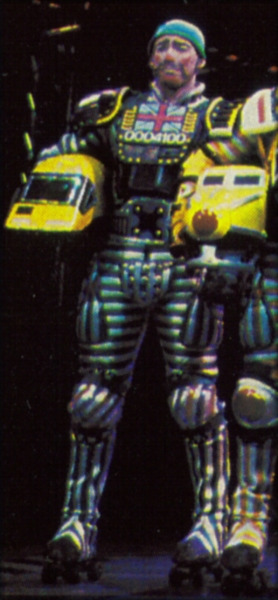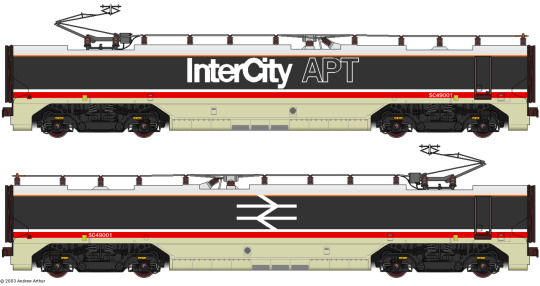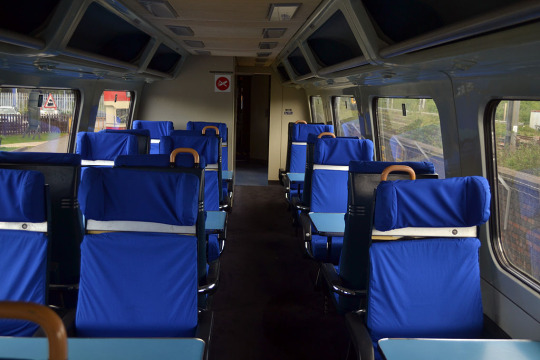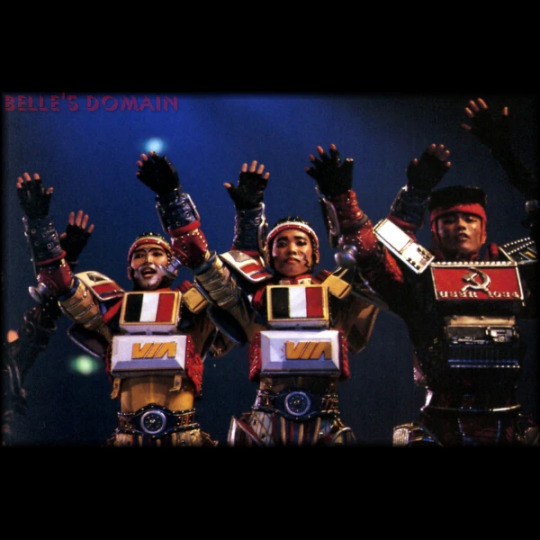Don't wanna be here? Send us removal request.
Text
Lesson #5.5
Now, Class, let’s move onto our next example of electric technology: the Shinkansen, also known as the Japanese bullet train.

Over the years, we’ve had different representatives in the race. There has been Hashimoto (橋本), Nakamura (中村), Yamamoto (山本), Nintendo (任天堂), and Manga (漫画).
(Old race brochures often had the misprint “Hashamoto,” but the correct English spelling is Hashimoto, which translates as “base of bridge,” i.e. 橋 = bridge, 本 = origin/base.)
The history of the Shinkansen spans several decades, but we will focus on a few areas of interest for this lesson.

“Shinkansen” comes from the Japanese words shin (新) and kansen (幹線) which translate as “new mainline.” The nickname of “bullet train” came from one of the proposed names, dangan ressha (弾丸列車).
They are so reliable when it comes to punctuality that on average train delays are 24 seconds.

The first generation of Shinkansen trainsets were the 0 Series, which were first in service in 1964 starting with the Tōkaidō Main Line.

Link
(Tōkaidō Shinkansen going past Mt. Fuji.)

Link
As with many National champions, the Shinkansen racers are the power cars of electric multiple units. The number of cars will vary from trainset to trainset, but many Shinkansen can have configurations involving buffet or restaurant cars, first-class cars (”Green cars), and/or standard-class chair cars.
The original trainsets had 12 cars, but, depending upon model, the number on a set can be as few as 4 (such as the Q sets built in 1997) or have up to 16.
Specific trainsets may have special cars, such as the Children’s Saloon cars on some of the R sets from the 0 Series.

Link
Some of the 100 Series had bilevel restaurant cars.

Link

Link
As previously mentioned, first-class cars are called “Green cars,” and these are distinguished by stylized four-leaf clovers.

There are several different types of Shinkansen trainsets, and so is it any wonder that there have been so many Shinkansen champions to participated in the world championship?
You can learn more about Shinkansen here.
youtube
3 notes
·
View notes
Text
Lesson #5.4
For our next electric train, Class, let’s turn our attention to a prototype who used to race for Great Britain, City of Milton Keynes.

Link
The Advanced Passenger Train was a pioneer in tilting-train technology, a project for the West Coast Mainline of British Rail. This was developed into three planned phases, but only the first two ever came into being.

Link
Before Milton and his siblings were manufactured, the single trainset of the gas-turbined APT-E (Advanced Passenger Train Experimental) was in service 1972—1976 (see below).

Link
Milton and his family are the second phase, the APT-P (Advanced Passenger Train Prototype). There were 3 trainsets built, and each had 14 cars. “A full train was made up of two units running back-to-back, with the two motor cars adjoining. The motor cars had no seating accommodation or through-gangway, so the two halves of the train were unconnected for passengers.” (Wikipedia)
Basically, a train set had a driving trailer on each end, where the engineers worked (this would be Milton and his identical brother), and the two center cars were motor/power vehicles, which connected to the electric lines.

Link

Link
The motor-car siblings had no way to allow humans to go from one half of the train to the other. Each half of the train (7 cars + 7 cars) were mirror images of the other half. The sibling layout was as follows:
“48101-48107 - Driving Trailer Second
48201-48206 - Trailer Second
48401-48406 - Trailer Restaurant Second Buffet
48301-48306 - Trailer Unclassified
48501-48506 - Trailer First
48601-48607 - Trailer Brake First
49001-49006 - Non-Driving Motor“ (Wikipedia)

How the interior of Milton’s cab/helmet would look like. Link

The interior view of Milton’s first-class sibling. Link
It is of little wonder that Milton used to compete in the train races here in the yard. The APT-P “...set the UK speed record at 162.2 miles per hour (261.0 km/h) in December 1979, a record that stood for 23 years.“ However, Milton and his family were not without their share of difficulties. The APT-P trains faced delays in development, and when they were finally utilized, they faced a blow to their already sinking reputation.
On 7 December 1981 the press was invited aboard APT for its first official run from Glasgow to London, during which it set a schedule record at 4 hours 15 minutes. The press proved uninterested in this success. Instead, they focused on a distinct sickening sensation from the tilt system, and nicknamed APT the "queasy rider". They also reported that the stewardess, Marie Docherty, suggested the solution was to "just stand with your feet apart." BR engineers did little to address the problem when one publicly suggested that the reporters were simply too drunk on BR's free alcohol. On its return trip from London the next day, one of the coaches became stuck in a rotated position when the tilt system failed, and this was heavily reported in the press. Two days later, the temperature dipped and the water in the hydrokinetic brakes froze, forcing the train to end service in Crewe
The APT-P could never quite garner enough positive feedback, even earning the nickname “Accident Prone Train” by the press. Eventually, the APT-P was removed from service altogether in favor of the diesel-powered High Speed Train (HST). Two of the trainsets were scrapped, and the surviving third is now a museum piece.
Despite its disasters, the APT-P had its place in the advancement in tilting trains. One such train is the Pendolino from Italy who used to race here in the yard alongside Espresso the Settebello.

For further research, do check out the following videos.
youtube
youtube
#starlight express#stex#national engine#british train#city of milton keynes#milton keynes stex#apt-p#advanced passenger train#advanced passenger train prototype
5 notes
·
View notes
Text
Lesson #5.3
In continuing our study of electric vehicles, let us look at a former racing champion, Weltschaft the Class 103 locomotive.

The first prototypes of the Class 103 (or Baureihe 103 in German) appeared on Deutsche Bundesbahn in 1965, and service began in 1970. They could reach speeds of 200 km/hr (120 mph) and were the flagship of DB. Many of the early locomotives pulled first-class services, but in 1979 second class was added to the InterCity lines.
One famous passenger train that pulled by a Class 103 was Rheingold.

Link

Although once a common sight on Germain lines, the Class 103 were not to last after the InterCityExpress was introduced in the early 1990s. Just as Weltschaft would be replaced by Ruhrgold the ICE, so too were his brethren taken from the railroad in favor of the more modern machines. Unfortunately, the Class 103 were not well maintained for monetary reasons, and many suffered from wear and tear.
“By the early 1990s, the intensive utilisation however, had resulted in an increasing number of defects. This tendency was intensified by the fact that DB, striving to be privatized, had significantly cut back on maintenance... Considering wear and tear, DB decided to replace these locomotives with the new Class 101, which entered service in 1996.
In the following years, Class 103 was relegated to lesser duties, but the locomotive had not been designed for frequent stops, so wear increased at an even quicker pace. After a brief comeback in 1998, when all InterCityExpress units were temporarily taken out of service after the Eschede train disaster, the remaining Class 103 units were retired from regular service by 2003.“ (Wikipedia)
However, this was not to be the end of the story for Weltschaft. “A total of 17 Class 103 have been preserved, with at least five units still operational. Two units are still part of DB rolling stock and are frequently used for test runs.” Could he one day return to race?
4 notes
·
View notes
Text
Marion, OH coaling tower

Link
2 notes
·
View notes
Text

#coto japanese academy#starlight express#stex#hashimoto#national#shinkansen#hashimoto the shinkansen#nintendo the shinkansen
4 notes
·
View notes
Text
Lesson #5.2
All right, Class. In our discussion of electric vehicles, let us turn our attention to one of our longtime racing legends, Espresso the Settebello.

The Settebello’s first service was in 1953 and ran until 1984. Since his retirement, Espresso has dedicated much of his time to racing in the Italian circuit, winning the spot as National Champion in Control’s tournament for several years now.
The name “Settebello” means “beautiful seven” and is the term for the Seven of Diamonds in the Italian game Scopa. Note how the Seven of Diamonds is painted beside the train’s name in this photo.

Link
The Settebello was a luxury train when active and was an electric multiple unit (or an EMU), consisting of seven cars in total.
“Car 1 cab, belvedere, 4 compartments Car 2 4 compartments Car 3 restaurant, bar Car 4 kitchen, staff, mail Car 5 luggage, shop (from 1959 compartments) Car 6 4 compartments Car 7 4 compartments, belvedere, cab.“ Link
“The Settebello was originally a Rapido-class service of FS, and from the start it carried first-class coaches only. The seven-car train included a full restaurant car, operated by the Wagons-Lits Company. All cars were air-conditioned. In addition to the regular first-class ticket price, the cost of travelling on the luxury train Settebello carried an extra surcharge, or fare supplement. The surcharge alone was almost as much as the first-class fare, but afforded passengers a service ‘comparable to that of a five-star hotel’, with amenities found on very few other day-journey trains of the time. These included an office where a traveller could ‘make a telephone call to anywhere in Italy’ and the availability of shower facilities in the restrooms.“ (Wikipedia)
Espresso is not a locomotive, but rather he is one of two power cars on his train. He and the other end car would work together to pull their siblings from Rome to Milan and back. Espresso is unique in that he is a power car who also carried passengers, and his human crew operated his controls in a command cabin atop his observation lounge, as seen in this picture of him from 1983.

Link

Inside Espresso’s lounge, as seen on his helmet Link

5 notes
·
View notes
Text
The models in this Mitropa ad look strikingly like Buffy, Ashley and Pearl, don’t you think?

“Mitropa was a catering company best known for having managed sleeping and dining cars of different German railways for most of the 20th century. Founded in 1916, the name "Mitropa" is an abbreviation of Mitteleuropa (German for Central Europe). The railway carriages displayed a distinct burgundy-red livery with the Mitropa logo.“ (Wikipedia)
#starlight express#stex#mitropa#buffy the buffet car#ashley the smoking car#pearl the observation car
4 notes
·
View notes
Text
Lesson #5
All right, Students. With so many locomotives converting to steam, this is a good time to discuss how other types of trains work. Today, let us look at the basic way an electric locomotive works.
In North America, electric trains are not as plentiful as they used to be. Many were replaced by diesel engines. Aside from National champions and that newcomer Electra, many of you may not have seen an electric vehicle up close.
Here is a snapshot from race night. Take a look at the racing helmet which Electra wears. That device on top is called a pantograph. This connects to the catenary or overhanging wires, which is where most electric vehicle draw their power. Some trains get their electricity from a third rail, where a device in their roller skate connects to an electrified rail. In either case, an electric vehicle must always be connected to a power source in order to function properly.

In addition to the superstar challenger, many of the National champions we have seen over the years have been electric vehicles of some sort, particularly those from Europe or Asia. The notable ones include: Weltschaft the Class 103 lovo, Ruhrgold the ICE, Bobo the TGV, Espresso the Settebello, Pendelino the Pendolino, Turnov the Russian engine, City of Milton Keynes the APT-P train, Hashimoto the Shinkansen and others.

Link
In addition to locomotives and EMU, coaches can be electrified. An electric dining car, like this one from Mitropa for example, would have a pantograph so that they may continue to serve customers even when disconnected from the locomotive.
Extra-Credit Homework: Pick an electric racer who you admire and write a story about them.
3 notes
·
View notes
Text
A quick lesson on how to read “Starlight Express” in Japanese. Unlike Expreso Astral, the show’s title was not directly translated into Japanese. Instead, it was written in katakana as スターライトエクスプレス.

There are three different writing styles in Japan: kanji, which uses Chinese glyphs; hiragana, which is a phonetic writing style usually for Japanese words, and katakana, which is also phonetic and often used for foreign words.

Link
Let’s look at the Japanese title again: スターライトエクスプレス.
Since you can’t directly translate the “St” sound, you have to divide “Sta” into 2 characters, su (ス) and ta (タ), though it should be noted that with the “su” sound, the “u” is often silent. Moving on, the “ー” indicates a Japanese long vowel. In this case, “Suta—” can also be written as “Sutaa,” with the long vowel taking the place of the R. Compare how “soccer” becomes “sakkaa” in Japanese.
Next, in katakana, both R’s and L’s are represented by the same glyphs. To make the “ligh” sound, 2 glyphs are used. ラ is Ra, and when combined with イ(i), it is pronounced “rai” (similar to “rye”). The “t” becomesト (to).
To make the “Ex,” you need to combine 3 separate glyphs: エクス or “ekusu.” The “pre” becomes プレ or “pure” and the final S sound is represented with another ス or su.
Starlight Express = Sutaaraito Ekusupuresu
9 notes
·
View notes
Text
Lesson #4
All right, Class. Let’s review this week’s vocabulary.
Extra-Credit Homework: Use the vocabulary words to write a story about someone you admire in the train yard!
Bad order — “A freight car which has been barred from service because of a mechanical problem or defect. To mark such a car a card is placed on it by a car inspector.” (American Rails Link)
Beanery — railroad slang for an eating house
Beanery queen — railroad slang for a waitress
Beans or Going to Beans — “Taking a break from work to eat” (Wikipedia)
Buffer stop: “a device to prevent railway vehicles from going past the end of a physical section of track.”

Link
Poppa McCoy and Belle the sleeping car sit on a buffer stop.

Link
Classification yard — “a railroad yard consisting of classification tracks” (Webster); “a place or depot where railway wagons are shunted and made up into trains and where engines, carriages, etc, are kept when not in use” (The Free Dictionary). In the UK, this is known as a marshalling yard.
Consist — “Used to describe the makeup of a train (i.e., freight, car types, etc.).” (American Rails)
Fallen flag — “A defunct railroad, having either merged or discontinued operations” (Wikipedia)
Hogger — “A locomotive engineer” (Wikipedia)
Hotshot — “A high priority freight train that is usually never held up and nearly always given the main line.” (American Rails)
Siding — “A second parallel track (running for a short distance) on single-track railway lines, allowing a train to pass another” (Wikipedia)

Link
Wye — “a triangular joining arrangement of three rail lines with a railroad switch (set of points) at each corner connecting to each incoming line” (Wikipedia) Also known as a triangular junction

Link
0 notes
Text
youtube
A fun video for you to enjoy, Students
4 notes
·
View notes
Text
Lesson #3
All right, Class. Some of your parents may have been following current events involving many diesel and electric engines considering a full conversion to steam power. Some of you may have heard Poppa McCoy talking about James Watt’s steam engine in regards to these conversions. This is a perfect opportunity to discuss the early history of steam technology.
First, let us define our terms. (Always define terms!)
Engine: a machine with moving parts that converts power into motion. This term can be applied to a railroad locomotive, as in “most, if not all, locomotives are engines, but not all engines are locomotives” sense.
Locomotive: a powered rail vehicle used for pulling trains
James Watt (1736-1819) did indeed invent a steam engine, introducing his model commercially in 1776, which was an improvement on the design introduced by Thomas Newcomen in 1731, five years before Watt was born.
The first working steam locomotive would not be built until 1802, which is a topic for another lesson.
youtube

Link
3 notes
·
View notes
Text
Lesson #2
All right, Class. Today we will be our discussions on steam locomotives. Turn in your textbooks to Page 5.

Link
Some of you may have grandparents who are steam locomotives, while many of you may be familiar with racing champion, Rusty, who used to work as a switch engine around the yard. You may have also met retired steamer, Poppa McCoy.
The very basics of how a steamer works is water and coal are stored in the tender (what Rusty’s backpack is called).

Link
The water tank is connected to Rusty’s boiler. When Rusty needs to build up steam, he puts coal into the firebox on his chest. This then powers the pistons (on his arms), which moves the rest of his body.

Like most engines in the yard, Rusty and Poppa are capable of movement without a power source, just like coaches and trucks, but they are often weaker as a result. If you remember in the recent railroad race, Poppa McCoy won the race, but his boiler was cold by the end.
Vocabulary Words: Look over this diagram of steam-engine components. Test yourself by seeing how many you can name. Link.
Extra Credit Writing Prompt: Write a story about how Poppa McCoy was able to win the race with a cold boiler.
5 notes
·
View notes
Text
Lesson #1
All right, Class. Before we delve into our rich railroad history, we should define some terms. (Always define terms!)
Rolling stock - locomotives, carriages, wagons, or other vehicles used on a railroad
Train - a series of railroad cars moved as a unit by a locomotive or by integral motors
Locomotive - a powered rail vehicle used for pulling trains; also known as an engine
Coach - a railroad car, typically passenger. In North America, this can refer to the economy class (coach class vs business class).
Truck - a railroad car, typically of the freight or maintenance variety
Wagon - a railroad car which typically transports freight or animals; a “goods wagon” is a British term for a freight car.
Van - See Wagon.
Around the yard, you will hear “train” used as a slang term to refer to locomotives (”steam train,” “electric train,” etc). “Coach” is sometimes used as a slang term for a female car, regardless of type (i.e. Volta the freezer truck is called Electra’s coach because they race together).
5 notes
·
View notes
Text
Class Is in Session
Hello, Students. I am Ms. Appleton the school car. I used to help my human teacher educate children, but I have come out of retirement to teach the little trains in Control’s yard all about railroads. You are welcome to enroll today by hitting that follow button.
In my class, you��ll learn:
* Train Vocabulary
* Train History
* Railroad Culture
* Rolling-Stock Functions and Mechanisms
and much more!

(A glimpse at a typical day in one of my classes back when I traveled with my human)
2 notes
·
View notes